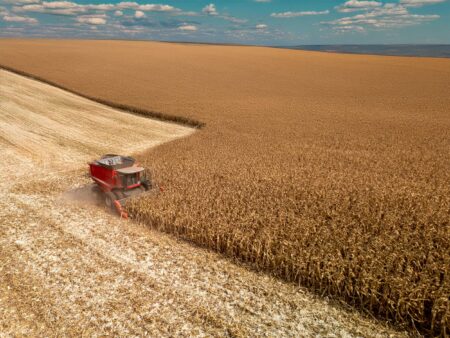The U.S. Drought Monitor released its latest map this week, highlighting a mixed pattern of drought changes, with both improvements and renewed dryness across the country.
Locally heavy rainfall (1–4 inches) was reported in northwestern Montana, northern Idaho, and much of the Northeast. Lighter totals, generally 0.5–2 inches, were observed across the Middle and Lower Mississippi Valley, upper Southeast, central Carolinas, central Appalachians, and Upper Ohio Valley. In contrast, much of the Lower Mississippi Valley, the central and eastern Gulf Coast, the South Atlantic region, and the Great Lakes received little to no measurable precipitation.
Following last week’s beneficial rainfall, this week’s low precipitation allowed dryness and drought to intensify across broad areas, including Texas, southern Oklahoma, the northern Great Lakes, parts of the northern Plains, the central High Plains, and north-central Montana.
Midwest
In southern Illinois, Phil Krieg, agronomy service representative for Syngenta Crop Protection, experienced a cloudy and rainy end of October.
“Rainfall amounts were 1–2 inches across the area,” Krieg said. “The rains came slow and soaked in, making things muddy for the first time in a long while.”
Oct. 31–Nov. 2 was sunny and cool, and the first frost of the season was widespread, explained Krieg.
“Soil conditions kept farmers sidelined until Nov. 1 or 2,” he said.
Moderate to locally heavy rain, from 1.5–3 inches, fell across much of Kentucky and northeastern Ohio, but amounts were considerably lower at most locations. Amounts of an inch or slightly more fell near the Ohio River and across central Ohio while a few tenths to a little more than an inch was observed over southern sections of Illinois and Indiana, from Missouri northward through interior Minnesota, and in the northern Great Lakes region.
In Minnesota, Tim Dahl, agronomic service representative for Syngenta Crop Protection, shared that conditions were cooler with a few showers spread across the state.
Little or no precipitation was observed over the remainder of the Great Lakes region, eastern Minnesota, central and northern sections of Indiana and Illinois, and northwestern Ohio.
“The weather last week was pretty seasonable,” said Nick Groth, agronomic service representative for Syngenta Crop Protection in Wisconsin. “It was cool, but mostly dry. It should have allowed for a good week of corn harvest progress.”
This precipitation pattern resulted in continued improvement near the Ohio River and across most of Ohio, while dryness persisted or intensified across the northern and central tier of the region.
Increasing 60- and 90-day precipitation deficits prompted significant expansion of moderate drought (D1) across the south-central Upper Peninsula of Michigan, northern Wisconsin, and east-central Minnesota. As a result, even though coverage by some degree of dryness or drought (D0+) dropped from 68.8% to 65.1% last week, drought coverage (D1+) expanded slightly from 33.4% to 34.8%.
High Plains
The High Plains Region is currently the least-affected region by dryness and drought.
Wyffels Agronomy Manager Jared Goplen, who provides agronomic support in northwest Iowa, southern Minnesota, and eastern South Dakota, said that conditions were cloudy last week with scattered rain showers.
“No large accumulations of moisture, but enough to make soils sticky,” Goplen said.
Measurable totals were restricted to eastern Kansas and southeastern Nebraska. This resulted in a few areas of deterioration, but less than 39% of the High Plains is experiencing some degree of dryness (D0+), and only 17.8% is enduring drought (D1+).












